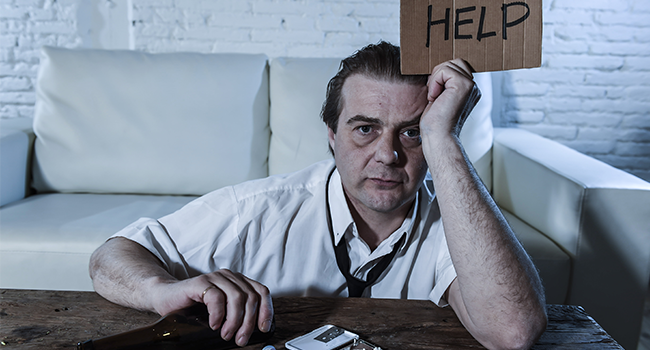Chore. A word we describe doing something we don’t particularly enjoy. Taking out the trash, mowing the lawn, washing the dishes. These are things that must be done, but since we don’t enjoy them and do them with clenched teeth and visions of various activities you will do once said chores are done. So how do you describe something, that needs to be done, you don’t really enjoy in any way and it has the potential to destroy your life and even kill you, if not done correctly or in time?
To call an addiction a chore is like referring to a healthy male adult Bengal tiger as “kitty”. How do you call the need to do something so hard and utterly energy draining as battling an addiction?
A duty for those pressured, blackmailed or forced to sign up. When battling an addiction is a duty, it is done for someone else, to have it over and done with so this part of the addict’s life can be put in the rear-view mirror as soon as possible.
A responsibility for others. Mostly parents who understand, that having an addiction and raising a child is something that is very hard to combine. Even if a high-functioning addict is able to maintain this duality, the quality of life and attention the child receives will never be comparable to that of children who grow up in functional and clean families.
There are those who simply look at it as a burden. For them, the battle with their own need to use an addictive substance is something that has to be done sooner or later so they accept it for what it is and simply get on with their lives.
A challenge. Very limited few view it this way, but the ones that do, dive in their fight head on and do not shy away from the mental hardships and the physiological drain. They almost welcome it and plow through the rehab course as if it is nothing. This type of person is very rare and could be called a myth.
So how do you keep people in rehab when they really do not wish to be there?
Engage the addict
There are three main ways to ensure an addict remains in treatment and does not throw in the towel. There are many ways to motivate an addict, everyone is a separate case and there are different things that work for each of them.
Rehab
One of the main reasons why so many addicts choose to leave the course is because they do not feel that they are getting enough help or guidance. While any self-respecting rehab center will help, plan and facilitate growth and healing, sobriety is not something a person can spoon-feed to an addict. Regardless, here are some important facets of rehab support that must be met so the addict remains in the rehab and is motivated to finish his path to sobriety.
- Understandable course expectations
- Positive influence from the rehab staff
- Opportunities to forge bonds with other addicts in group activities
- 24/7 access to support from physiologists, social workers, medical staff, and counselors
- Comfortable, safe and temptation-free environment
Individual focus
While people can be forced to be free of their dependence on drugs, no-one can force sobriety on an addict. It needs to be a goal that is both wanted and believed in. To boost and maintain that belief, the person must be motivated in a variety of ways, that remind him who all this hardship is for. Some of the ways to motivate the addict as an individual are listed below.
- Constant reminders, that this change is for the better of the addict.
- Family and friend support is of paramount importance and one of the main pillars of support in the addict’s fight for sobriety.
- Addicts workplace exerting equal amounts of pressure and support, by giving time for recovery while reminding of the possible outcomes in case of failure.
- A constant reminder of health benefits that come with a life that is dedicated to the purity of both body and mind.
Active intervention
As one of the most drastic ways to support an addict, active intervention is a last resort technique. In a lot of ways, this type of support involves many aspects of both individual focus and rehab engagement. This type of support is usually applied when it is time to make or break the addict. It will either push him further away or snap him out of drug promised illusions.
A rehabilitation institution is unable to detain anyone. By law, the patient has the choice to just walk out at any time. Many are eager to remind the rehab about this fact when they simply announce that they are packing their bags and intend to leave. When reasoning with the patient has failed, active intervention is set in motion. It can vary from case to case greatly. In most of them though, the family and friends of the addict are contacted in hopes that they will be able to talk some sense in the agitated and in many cases even aggressive patient.
It is very easy to throw all addicts in the same bag and diagnose them all at once in some obscure blanket statement. It is counter-productive, however, as each addiction is different from the one before and as such, they are treated with a tailored approach.
Do not hesitate to seek help from loved ones and professional rehab counselors. The hardest part is the wish to get clean, to make that first step. It is a fight that will last many years, decades even, but no addict is hopeless. There are prospects, future, and potential in every single one of us.














